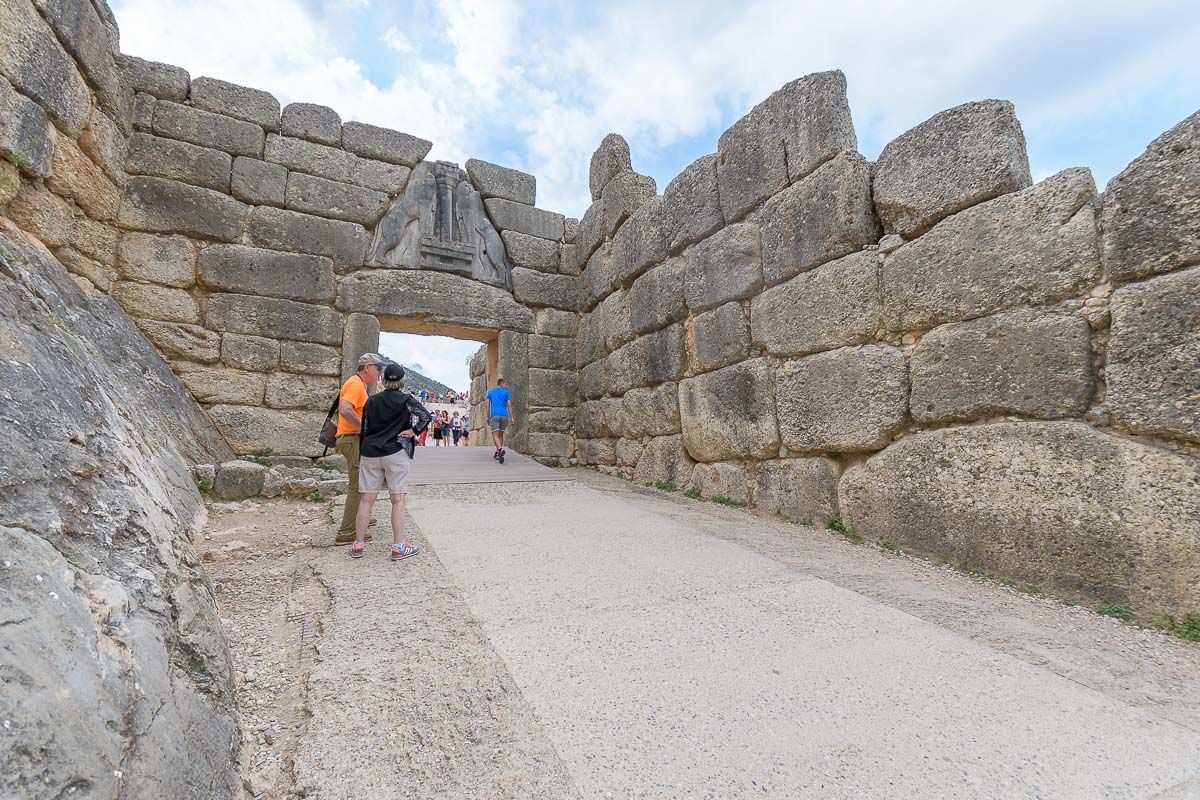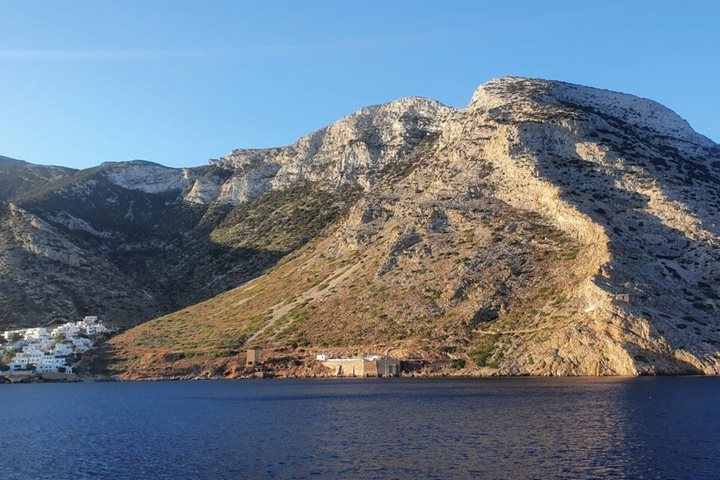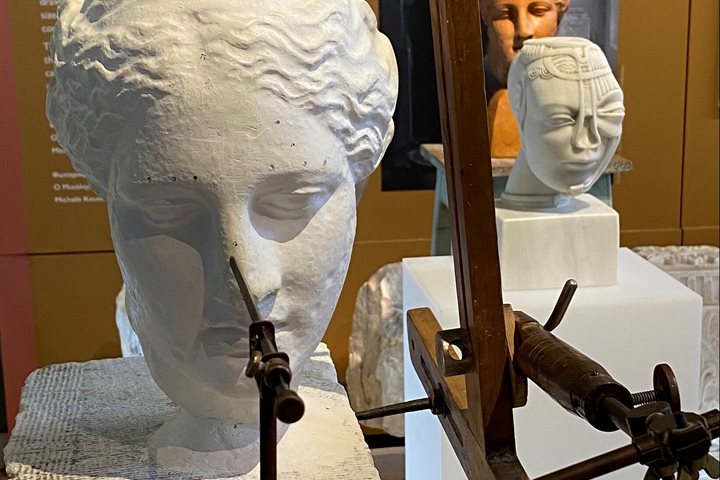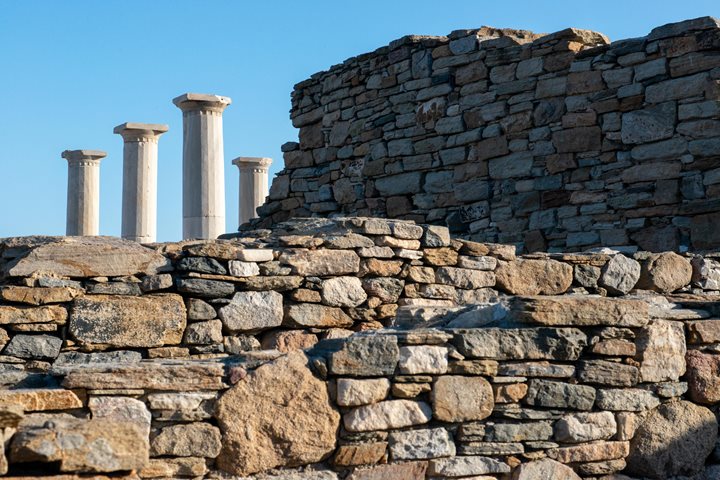Due to continuing strong winds, the final full day of our Greek Islands voyage took us out of the Cyclades and into the Peloponnese. We anchored off the charming town of Nafplio, the first capital of modern Greece from 1829 until 1834. While some chose to explore this Venetian-influenced seaside town on their own, most chose to join Eleni and Kriton for a guided tour of some of the most important archaeological sites in Greece. We began in Mycenae, namesake of the Late Bronze Age civilization that thrived in the Aegean. The characteristic feature of a Mycenaean citadel is substantial defensive walls, a feature seemingly lacking on Minoan Crete. The entry gate through Mycenae’s massive walls is termed the Lion Gate after its triangular stone relief of two lions (or lionesses?) flanking a wooden column. After visiting the citadel, we saw the so-called Treasury of Atreus, actually a tholos (or beehive) tomb that is yet another impressive architectural accomplishment. We then continued on our journey, past hills dotted with modern windmills and ancient olive groves, to the Hellenistic-era site of Epidaurus. Here we tested the acoustics at the best-preserved ancient theater in Greece, while distant thunder hinted at the afternoon rain to come. Kriton and Eleni described the religious function of theater in the ancient Greek-speaking world, an especially important role at this site famed for its healing abilities. As we traveled back to the port from Epidaurus, the rain arrived, and it continued through much of our final afternoon aboard. The storms disrupted our sailing plan, but provided an appropriate backdrop for a viewing of the classic film, Around Cape Horn, a narrated documentary about sailing aboard a tall ship in the 1920s.
9/12/2022
Read
Sea Cloud
Sifnos, Greece
Our weeklong expedition abord Sea Cloud has taken us through a wide range of the conditions that the Cycladic Islands have to offer. Today, with calm seas, we arrived in the charming seaside town of Kamares, the chief port of Sifnos. During antiquity, this island enjoyed a period of great prosperity as they were privy to plentiful deposits of gold and silver, and the Sifnians built fantastic monuments at Panhellenic sanctuaries with their newfound wealth. By the late 6th century BC, though, these mines were exhausted, and the islanders later fell within the influence of the Athenian Empire, aka the Delian League. Traces of the Sifnians’ former wealth are evident in the blocks of carved marble, originally from temples of the Ionic Order, which have been repurposed into present-day structures. In the Middle Ages, Sifnos was part of the Byzantine Empire until the early 13th century when the Venetians wrested control of the Cyclades after the Fourth Crusade. This medieval phase of the island’s history is evident in the charming village of Kastro, where we arrived after a short bus ride from the port. Situated atop an outcrop, this fortified settlement stands aloft about 200 feet above the rocky shoreline of the Aegean Sea below. Its thick outer wall is breached by only a handful of narrow passages, while the narrow streets and staircases within it are ripe for exploration. To the east of Kastro, a beautiful little chapel with a characteristic blue dome (the Church of the Seven Martyrs) sits proudly on a peninsula against the stunning blue waters around it. Upon returning to Kamares harbor, some of us visited a sandy beach–it was time for a swim! Afterwards, we enjoyed a fantastic buffet lunch on the ship, with a special pasta bowl on offer. During the afternoon, the weather shifted, and we were once again feeling the steady stream of 20 knot winds from the north. In the evening, we gathered one last time for the Captain’s farewell drinks, and we shared our memories together with the voyage slideshow. After dinner, we got one last surprise– Sea Cloud’s crew took us through a hearty rendition of traditional sea shanties. Cheers to the (not so) drunken sailors!







